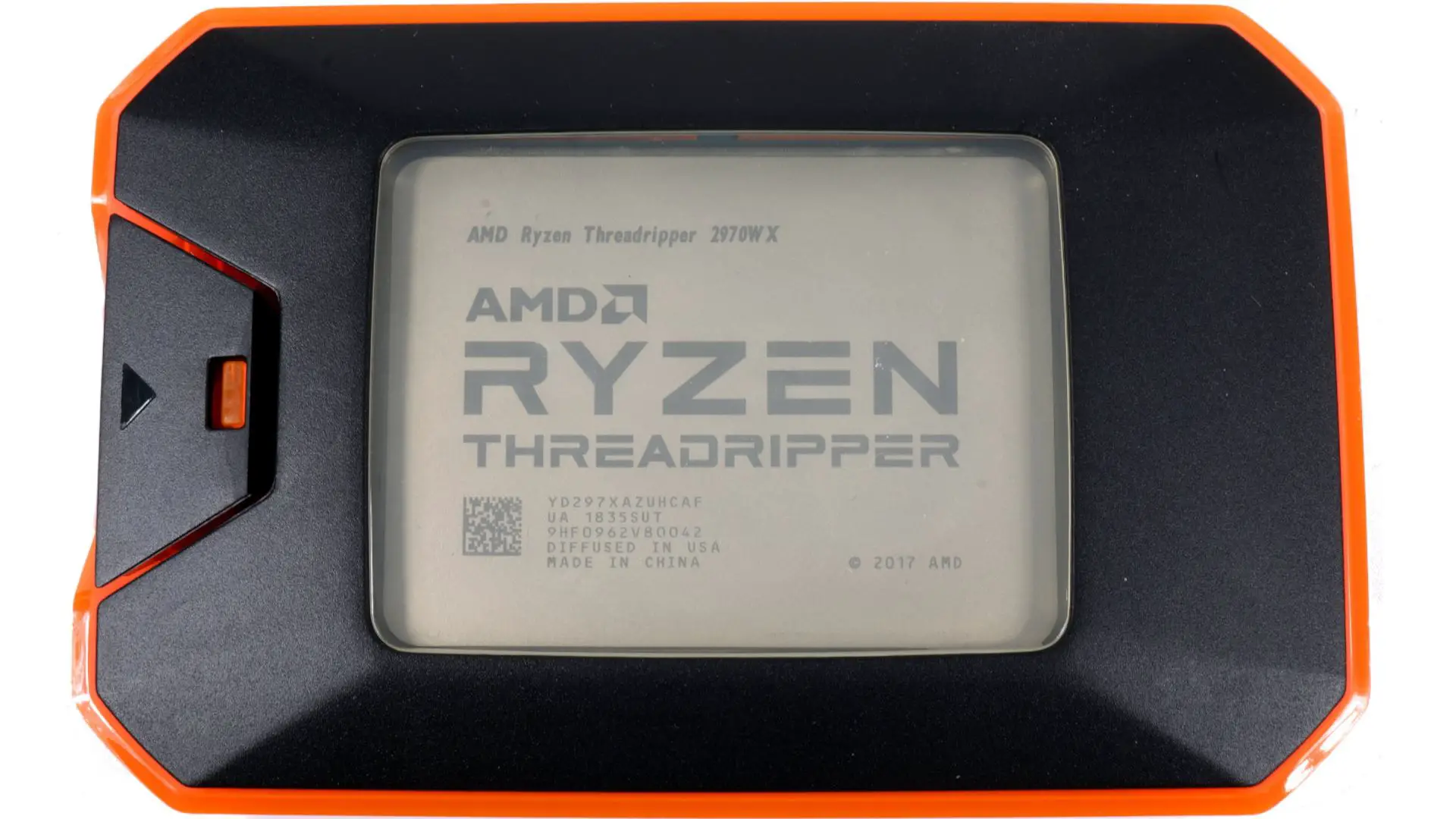A middle ground of architects, independent photographers, and many other creative people who require PCs that won’t steal them too many billable hours while they wait for their masterpieces to render lies between a Hollywood special effects studio and a PC gamer’s den.
Hardcore gamers may construct their own rigs around a gaming powerhouse like the Intel Core i9-9900K, and large Hollywood studios have the funds and IT support for a fleet of Intel Xeon-powered workstations. But there aren’t many possibilities in that intermediate area.
The new AMD Ryzen TR 2970WX ($1,299 on release) is fortunately one of them. One of four second-generation Threadripper family elite consumer processors, it has enough cores, threads, unlocked flexibility, and wallet-friendliness to act as a fantastic brain for digital producers looking for processing power for the newest and greatest programs without spending a fortune.
AMD Ryzen TR 2970X Specifications
AMD updated its standard Ryzen line-up earlier this year with new Zen+ enhancements, which featured 12nm manufacturing, better memory and cache latency, higher clock rates, and increased multi-core Precision Boost frequencies. The most recent Threadripper models from the business also use those modifications.
Additionally, AMD divided its Threadripper lineup into the WX and X families. The two WX versions are designed for heavy multitasking workloads, video encoding, 3D rendering, and cinema mastering. They are so appealing to programmers, audio and video engineers, and content producers.
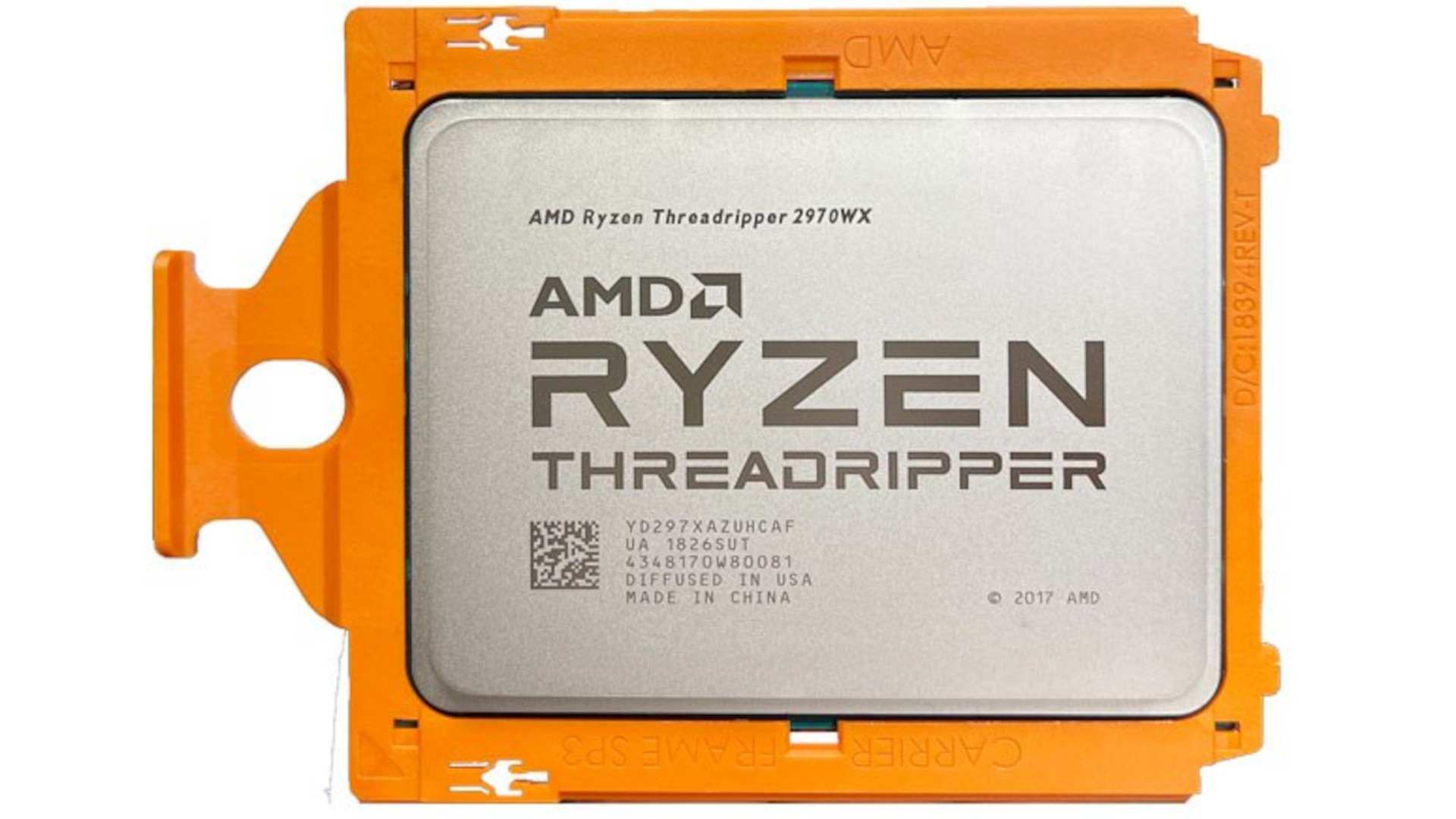
AMD’s second quad-die processor for high-end desktops is called Ryzen Threadripper 2970WX. Again, it has 48 threads and 24 cores. Using AMD’s XFR (eXtended Frequency Range) techniques, a 3 GHz base frequency can be extended to 4.2 GHz. Additionally, the CPU has upgraded Precision Boost 2 technology, which allows it to achieve multi-core turbo clock rates that are more aggressive than those of first-gen versions.
The four dies that make up the WX CPU each have eight physical cores and 16MB of L3 cache. As a result, the AMD Ryzen Threadripper 2990WX and 2970WX both have 64MB of L3 cache. That’s kind of AMD considering how often Intel disables cache along with turning off cores to make cheaper models. Nevertheless, AMD does carve off two cores per chip to provide the 24-core arrangement of the 2970WX. The AMD Ryzen TR 2970X is rated at 250W, just like the 2990WX.
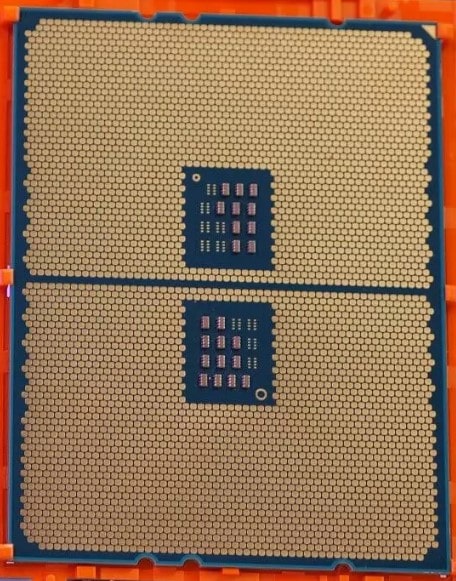
All Threadripper CPUs from AMD come with an Asetek mount that allows them to use appropriate closed-loop liquid coolers to partially cover the large heat spreader. AMD claims that this limited coverage is suitable for stock operation. We discovered that full-coverage coolers perform better, nevertheless. Additionally, AMD and Cooler Master worked together to create the Wraith Ripper heat sink and fan set for the Socket TR4 interface. However, it is offered separately.
Of course, AMD improves thermal transfer by using Indium solder between its dies and heat spreader. For its Skylake-X processors, Intel uses liquid cooling and recommends thermal grease. That is not required for Threadripper, according to AMD. Indium solder was recently added by Intel to their Core i9 series, so it’s possible that this innovation may soon reach the HEDT market.
All second-generation Threadripper CPUs are backward compatible with X399 motherboards that are already in use. However, older Socket TR4-equipped boards could struggle to handle AMD’s 250W Threadripper WX series CPUs’ power requirements, especially if you attempt to overclock. If tweaking is on the agenda, think about looking for a new X399-based platform.
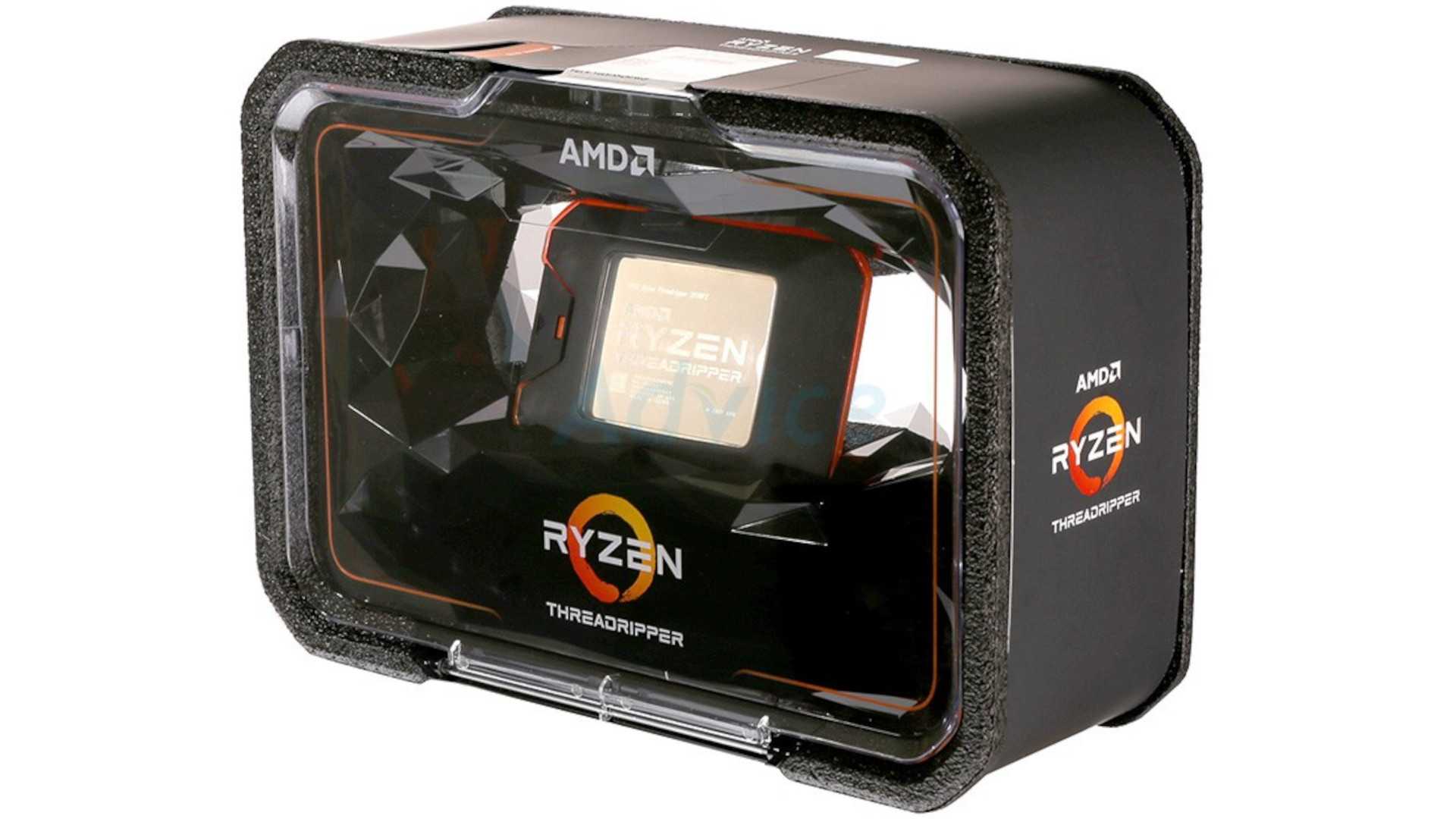
On the AMD Ryzen TR 2970WX, there are a ton of well-known AMD value-adds: you get a ratio multiplier that can be unlocked for overclocking, the new Precision Boost Overdrive automated overclocking function, Ryzen Master software, and 60 lanes of third-generation PCI Express (plus four lanes attached to the supporting chipset). Multiple add-in graphics cards may benefit from abundant connection, but high-performance storage and networking are also aided by it.
The independent dual-channel memory controllers included on the two dies of Threadripper CPUs work together to offer quad-channel memory with different data transfer rates depending on your configuration. AMD raises the maximum specification for its second-generation Threadripper CPUs to DDR4-2933 (up from DDR4-2666). The platform supports ECC memory and capacities of up to 256GB, but as density rises, it can handle capacities of up to 2TB.
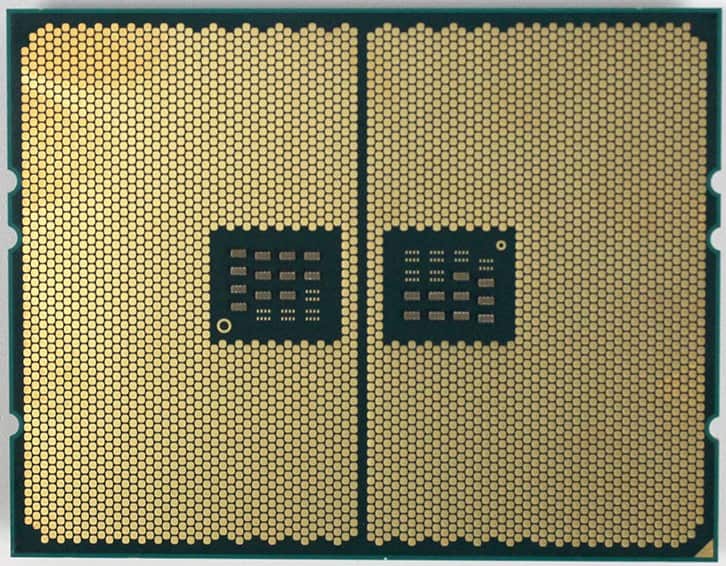
AMD Ryzen TR 2970X Specs
| Platform | Boxed Processor |
| # of CPU Cores | 24 |
| Base Clock | 3.0GHz |
| L3 Cache | 64MB |
| Unlocked for Overclocking | Yes |
| Max. Operating Temperature (Tjmax) | 68°C |
| Product Family | AMD Ryzen™ Processors |
| # of Threads | 48 |
| L1 Cache | 2.25MB |
| Default TDP | 250W |
| CPU Socket | sTR4 |
| Launch Date | 10/18 |
| Product Line | AMD Ryzen™ Threadripper™ Processors |
| Max. Boost Clock | Up to 4.2GHz |
| L2 Cache | 12MB |
| Processor Technology for CPU Cores | 12nm |
| Thermal Solution (PIB) | Not included |
| *OS Support | Windows 10 – 64-Bit EditionRHEL x86 64-BitUbuntu x86 64-Bit*Operating System (OS) support will vary by manufacturer. |
AMD Ryzen TR 2970X Performance & Tests
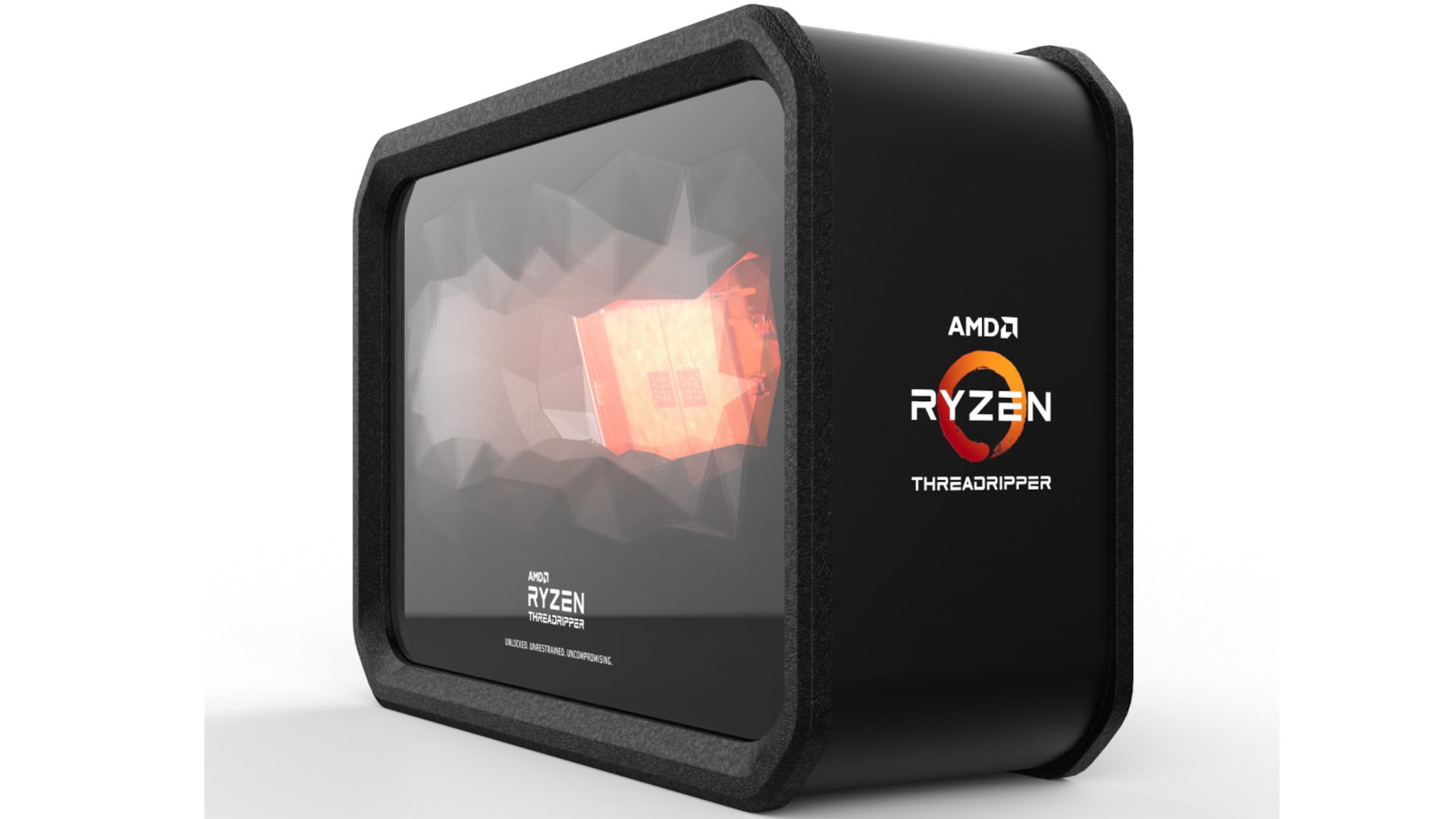
Our testing routine began with Maxon’s CPU-intensive Cinebench R15 test. One of the greatest quick assessments of a task using all available processor cores and threads is Cinebench, a fully threaded test. Even professional apps can’t use all threads as well as Cinebench can in practice, but this horsepower test demonstrates the chip’s full capability by rendering a complicated image using the CPU rather than the GPU.
We’ve put in the single-core results here in addition to the typical test that utilizes all available cores to give you an idea of how AMD’s new CPU performs with single-threaded tasks.
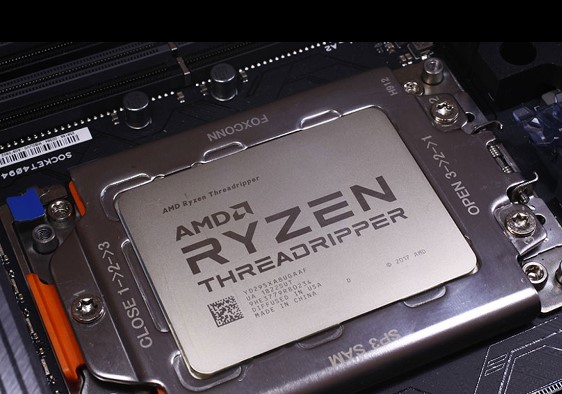
The AMD Ryzen TR 2970WX dominates the competition on the all-cores test with a score of 4,203, as it should: It simply has by far the most cores. This finding shows that all other things being equal, any app whose performance scales with the sheer number of cores available to it will like this CPU. Real-world applications that can execute core-dependent tasks like 3D rendering often also perform other tasks that depend more on clock speed, memory, GPU performance, and other aspects besides the number of CPU cores.
The performance of the AMD Ryzen TR 2970WX on the single-core Cinebench test is almost the exact opposite. Only the first-generation Threadripper 1950X recorded a lower score, by a hair than it, with a score of 168, placing it at the bottom of its peer group (167). Particularly noteworthy is the fact that the Intel chips constantly outperform their AMD rivals in the single-core Cinebench test. The Core i7-7960X scored 191, whereas the Core i9-9900X with a faster clock speed scored 218.
AMD Ryzen TR 2970X Conclusion
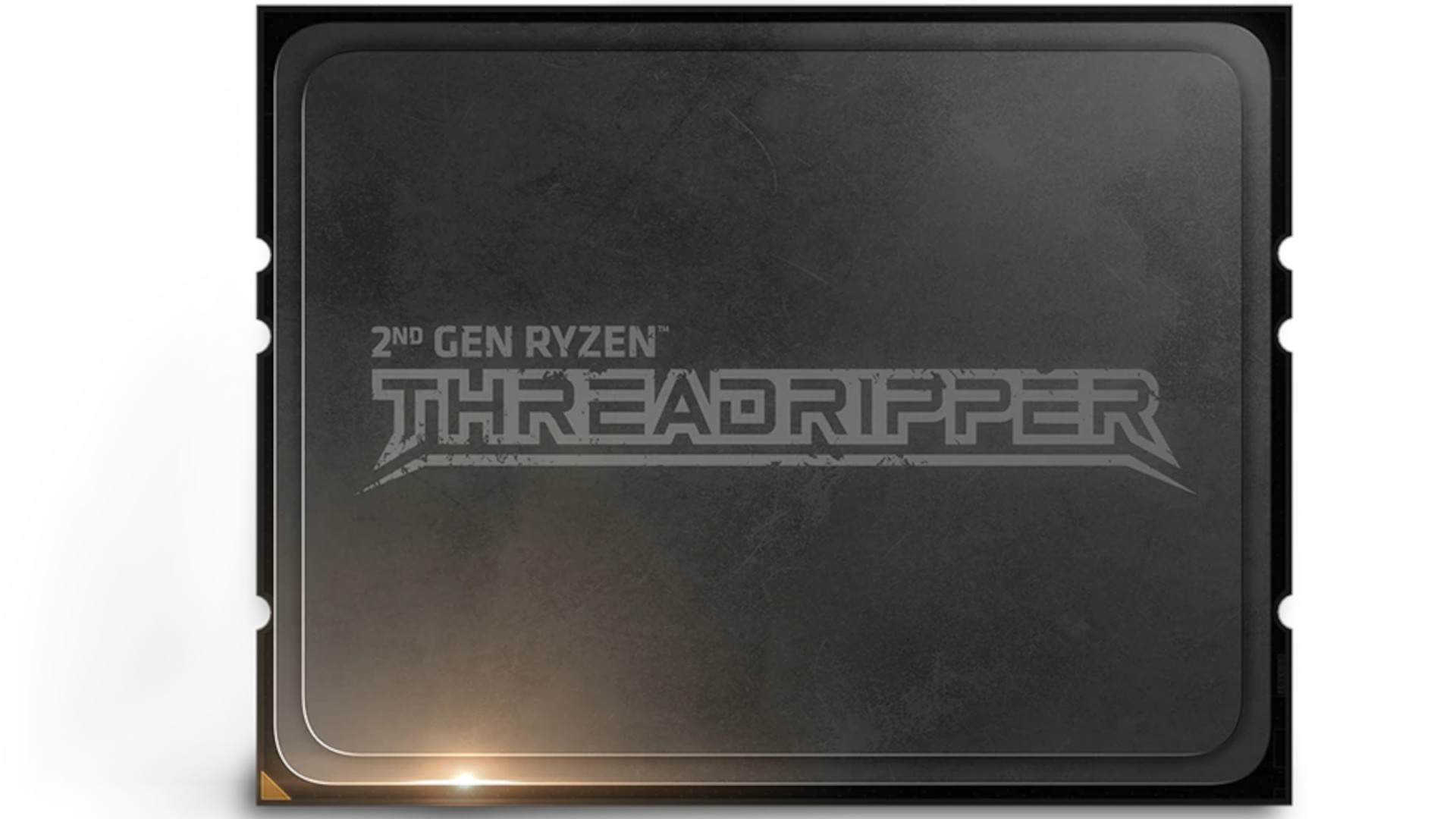
The Threadripper 2970WX’s primary function is as a workstation APU. This use case is reflected in benchmark results, with the APU excelling in multi-core testing. Some may consider it excessive to pay over US$1,300 for comparatively subpar single-core performance, but the Threadripper 2970WX is far less expensive than competing Intel models and has noticeably superior multi-core performance. In conclusion, we believe that the high price is justified.
Editors of videos or photos will value the AMD Ryzen TR 2970WX power. Similar to the APU, the Threadripper 2970WX is an excellent choice for a server CPU because it can run several virtual machines concurrently. The APU is a multi-core beast overall, but because of its poor single-core performance and expensive launch price, it is not a good all-around processor. Instead, it works best in workstation or server applications where it can take advantage of its high core and thread count.
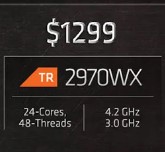
Is AMD Ryzen TR 2970WX worth it?
With 24 cores and 48 threads, the AMD Ryzen Threadripper 2970WX is a second-generation Threadripper processor. How much it’s “worth it” will depend on your needs, budget, and use case. Here are some things to think about:
Multithreaded Performance: With its exceptional multithreaded performance, the Threadripper 2970WX is a good choice for jobs requiring a high number of cores, like 3D rendering, video editing, and content production.
Budget: The AMD Ryzen TR 2970WX and other Threadripper CPUs can cost more than regular processors. Think about your spending plan and whether the extra cores and improved performance are worth the money for your particular needs.
Gaming: Processors with fewer cores but faster clock speeds, such as those in the Ryzen 9 series, may provide better value for gaming performance if that is your main priority.
Newer Generations: It’s possible that newer CPU generations have been launched after my last update. Examine the cost and availability of more recent models to determine whether they provide better features or performance within your price range.
Workload: Take into account the particular programs and jobs you’ll be using. The higher core count of Threadripper CPUs may not be completely utilized by some software, thus it’s critical to match the CPU to your workload.
Availability: Due to technological advancements, older models, such as the 2970WX, may become less common. Look for more recent solutions that offer a decent trade-off between price and functionality.
To make an informed choice based on the state of the market and the available products, it is advised to look up the most recent reviews, benchmarks, and pricing data. With 24 cores, the AMD Ryzen TR 2970WX is a powerful CPU that can be a worthwhile purchase if your tasks benefit from a high core count. However, you might get a better deal with another Ryzen processor if gaming or less complex tasks are your main use case.
Is AMD Ryzen TR 2970WX good for gaming?
A top-tier desktop processor with 24 cores and 48 threads is the AMD Ryzen TR 2970WX. It is made for professional workloads involving a lot of multitasking, such as scientific simulations, 3D rendering, and video editing.
But AMD Ryzen TR 2970WX’s performance in games isn’t as good as that of its mainstream competitors, including AMD Ryzen 9 5950X or Intel Core i9-11900K. The single-core performance of AMD Ryzen TR 2970WX is not as good as that of its mainstream competitors, and most games do not use more than 8 cores.
Therefore, AMD Ryzen TR 2970WX might not be the greatest option if your main purpose for purchasing a processor is gaming. Alternatively, AMD Ryzen 9 5950X or Intel Core i9-11900K are good choices since they provide superior gaming performance.
Can you overclock AMD Ryzen TR 2970WX?
The AMD Ryzen Threadripper 2970WX has overclocking capability, much like a lot of other Ryzen chips. Overclocking is the process of tweaking the clock speeds and maybe other factors in order to outperform the factory settings.
The official overclocking tool from AMD, the AMD Ryzen Master program, can be used to overclock the AMD Ryzen TR 2970WX. Ryzen Master offers an easy-to-use interface for modifying a number of specifications, such as voltage, memory settings, and core clock speed.
The following are general procedures for Ryzen Master overclocking:
Download Ryzen Master: The official AMD website is where you can get Ryzen Master.
Install Ryzen Master: To install the Ryzen Master program on your computer, adhere to the installation guidelines.
Start Ryzen Master: To utilize the overclocking options, open the Ryzen Master application.
Modify Settings: Ryzen Master gives you the ability to modify voltage, core clock speed, and other settings. Gradually adjust while keeping an eye on the system’s temps and stability.
Stress Testing: To make sure your system is stable after making changes, you must stress test it. For stress testing, programs such as Prime95 or AIDA64 can be utilized. Make sure the temperature stays within safe bounds by keeping an eye on it.
Fine-tune: The process of overclocking is iterative. Adjusting your settings may be necessary to achieve the best possible balance between stability and performance.
It’s crucial to remember that overclocking has certain hazards and can break your warranty. It’s also important to keep an eye on temperatures and make sure your cooling solution is sufficient because elevated power consumption and heat generation might negatively affect the stability and longevity of your system.
What temperature should an AMD Ryzen TR 2970WX run at?
Like many other processors, the AMD Ryzen Threadripper 2970WX’s optimal operating temperature is normally advised to be within a specific range in order to provide consistent and dependable performance. AMD typically offers a maximum safe operating temperature for their CPUs, while precise temperature numbers can vary depending on factors including cooling systems, ambient temperatures, and system configurations.
The maximum recommended temperature (Tj Max) for the AMD Ryzen TR 2970WX is normally between 68 and 72 degrees Celsius. It’s critical to keep the CPU temperature below this mark in order to avoid overheating and preserve steady operation.
In order to get maximum performance and to account for possible temperature spikes during intense workloads or overclocking, many users try to keep their CPUs operating at lower temperatures. Making sure your cooling solution is sufficient to meet the processor’s demands and that your system stays within safe temperature ranges is a smart practice.
You can utilize third-party programs like HWMonitor, Core Temp, or MSI Afterburner, or a variety of software tools like AMD Ryzen Master to keep an eye on temps. These tools give you access to real-time temperature data on your processor and other important system parts. In order to enhance thermal performance, you might need to assess your cooling solution or modify fan curves if you observe temperatures that are regularly getting close to the highest advised limit.
How much power does AMD Ryzen TR 2970WX draw?
The thermal design power (TDP) of the AMD Ryzen TR 2970WX is 250 watts. The maximum power that the CPU is capable of using under typical operating circumstances is known as the TDP.
In order to evaluate the AMD Ryzen Threadripper 2970WX, Tom’s Hardware tested power consumption under various workload scenarios. They noticed that the workload and the cooling system were the two main factors influencing the processor’s power usage. For example, when the processor was operating at high clock speeds and the Precision Boost Overdrive (PBO) feature was activated, the processor’s power consumption was greater than 64 watts.
AMD Ryzen TR 2970WX
-
Performance - 97%97%
-
Price - 96%96%
-
Value - 97%97%

